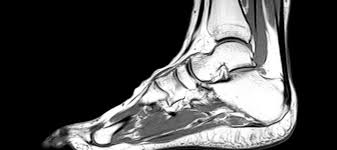Fill out form to enquire now
MRI Right Foot with Leg
Medintu has collaborated with the best pathology laboratories that are NABL and NABH certified and follow ISO safety guidelines to provide the best MRI Right Foot with Leg at an affordable price for needy individuals. MRI stands for Magnetic Resonance Imaging, and is an important, non-invasive technique used to obtain detailed pictures of the internal structure of the body. MRI is a noninvasive procedure in which strong magnetic fields and radio waves combine to produce sharply-defined pictures that allow doctors to analyze the characteristics of tissues, organs, as well as bones in detail.
MRI of the Right Foot with Leg is intended to generate maximal image representation of all the bones, joints, muscles, tendons, ligaments, and soft tissues of the foot and leg. This imaging technique is essential in diagnosing various disorders including acute trauma poor, negative acute injuries like fractures, Sprains, more complex diseases inclusive of infections, tumors, and different pain syndromes. Whether it is caused by an accident or some disease, or if one just feels sore for no apparent reason, an MRI can help as doctors are able to establish working recovery processes. To schedule an appointment for MRI Right Foot with Leg, simply contact Medintu or call our customer care at +919100907036 or +919100907622 for more details and queries.
Indications for MRI of the Right Foot with Leg
MRI of the right foot and leg should be done when specific signs or signs and symptoms of a disease or injury need to be visualized or when the health of an individual needs to be assessed more thoroughly. This imaging technique is most helpful when there are concerns with the bones, soft tissues, joints and nerves. Some of the key indications for an MRI in this area include:
- Possible Broken Bones and / or Injuries
Fractures: MRI can detect stress fractures or tiny cracks that are hard to see on a plain X-ray especially if it’s on the foot and ankle region.
Bone bruises: It can also indicate bone contusions, also called bone fractures that do not involve bone fractures.
- Soft Tissue Injuries
Tendon or Ligament Tears: MRI is proven to compliment other diagnostic techniques in diagnosing tears, strains, or sprains of tendons and or ligaments that support the foot and leg these include the Achilles tendon, plantar fascia, or even the anterior cruciate ligament (ACL).
Muscle Injuries: It can uncover muscle pulls or ruptures, in athletes or in those who have recently suffered from an injury.
- Joint Disorders
Arthritis: MRI shows inflammations that are found in osteoarthritis or rheumatoid arthritis in the joint of the foot and leg, to help the physician determine the extent of the disease.
Joint Effusion: This is an increase in thirst size of a joint due to influx of fluid within it and MRI can indicate the problem.
- Presence of Swelling, Pain or Persistent Discomfort
In case a patient presents with complaints of pain, swelling or stiffness of the foot or the leg that may not be explained by treatment, the deeper pathology such as inflammation, cysts or tumors may require an MRI scan.
- Suspected Infections
For instance when an infection is suspected in the form of abscesses in the soft tissue or in the bone, MRI will assist the doctors in identifying the infections such as osteomyelitis or soft tissue infection.
Benefits of MRI for the Right Foot with Leg
An MRI of the right foot and leg has many major benefits that make it the most preferred imaging technique in diagnosing and evaluating several conditions. Here are some of the major benefits:
- Non-Invasive Imaging
No Surgery or Invasive Procedures: MRI is a non-invasive procedure. This means that there are no surgical incisions or injections to visualize the inside structures of the foot and leg. It is, therefore, safe and less stressful than most other diagnostic methods.
- High-Resolution and Detailed Images
Clear visualization of soft tissues: MRI provides highly detailed images of both hard and soft tissues, whereas X-rays and CT scans only distinguish soft and hard tissues. Such value is especially noteworthy in conditions affecting soft tissues, such as tears or inflammation and infections.
More detailed than other imaging modalities: MRI can be used for injuries not appearing on an X-ray, such as a stress fracture, muscle tear, or joint damage. This can also provide a clearer image of the complex anatomy within the foot and leg.
- No Ionizing Radiation
Safer for Repeat Imaging: MRI does not employ ionizing radiation. So, in cases of patients who suffer from chronic diseases and sportspersons who typically have the same issue recurrently, their safety is maintained while using the least injurious method.
Safer for a specific group of population: This is safe for pediatric as well as pregnant population since it does not allow irradiation on them. All risks that have been caused by ionizing radiation can be totally eliminated.
- Early detection and proper diagnosis
Early Problem Detection: MRI is sensitive enough to detect problems early in the course of an illness, even before the symptoms are very severe. This can mean that a condition such as arthritis, tendonitis, or nerve compression can be treated much more effectively and have a better prognosis.
Detailed Exploration of Complex Conditions: When complex conditions present in the foot or leg, from tumors and bone infections to neural damage, it is no other technique except MRI that will provide the details.
- Imaging of Bone and Soft Tissue
Comprehensive Imaging: MRI offers a unique ability to show both bones and soft tissues, including cartilage, tendons, ligaments, and muscles, in great detail. This makes it ideal for diagnosing injuries or conditions that affect multiple tissue types simultaneously, such as fractures with associated soft tissue damage.
How the MRI Procedure Works?
An MRI of the right foot and leg is a straightforward, non-invasive procedure that allows doctors to capture detailed images of the internal structures of the foot, ankle, and leg. Here’s an overview of what to expect before, during, and after the MRI:
- Preparation for the MRI
- You would be requested to change into a hospital gown before the scan. Remove all metal items, including jewelry, watches, glasses, and hearing aids, as they can interfere with the magnetic field of the MRI machine.
- Medical History Review: The technician or doctor may ask for any medical conditions, implanted devices (such as pacemakers, metal plates), or allergies, especially to contrast dye if it is required for the procedure.
- Contrast Dye (Optional): Sometimes, a contrast dye called gadolinium is injected into a vein, usually in your arm, to make specific tissues and blood vessels stand out more clearly. It can make inflammation, infection, or tumors more noticeable. If contrast is given, your doctor will describe the procedure and risks involved.
- During the MRI
- Lie down on the MRI table: The MRI technologist will ask you to lie down on a padded table. You will be required to maintain your right foot and leg in a certain position to provide the best images. They may use pads or straps to stabilize your foot and leg to prevent movement during the process.
- In to the MRI Machine: The table slowly moves into the huge cylindrical magnet. Your body, from your waist down, will be inside of it while your head is on the outside. The scanner has open ends so that you are not enclosed inside of it, but the leg will be inside.
- Scanning Process During scanning, you would hear a lot of thumping or buzzing sounds since the MRI machine takes images. The scanning process is usually around 30 minutes to 60 minutes depending on the complexity of the scan and if contrast dye is applied. You have to stay as still as possible so that the images will be clear and precise.
- Communication with the Technician: You will be able to communicate with the MRI technician during the procedure. You may likely have a microphone and speaker so you can inform them if you experience discomfort or need help.
- Test Type: MRI Right Foot with Leg
- Preparation:
- Wear a loose-fitting cloth
- Fasting not required
- Carry Your ID Proof
- Prescription is mandatory for patients with a doctor’s sign, stamp, with DMC/HMC number; as per PC-PNDT Act
- Reports Time: With in 4-6 hours
- Test Price: Rs.4000
How to book an appointment for a MRI Right Foot with Leg?
To schedule an appointment for MRI Right Foot with Leg, simply contact Medintu or call our customer care at +919100907036 or +919100907622 for more details and queries.
How long does an MRI take?
An MRI of the right foot and leg generally takes between 30 and 60 minutes, depending on the complexity of the scan and whether contrast dye is used. It is important to remain still throughout the procedure to ensure that clear images are obtained.
Is the MRI procedure painful?
No, the MRI itself is not painful. However, you may feel some discomfort from lying still for an extended period. If contrast dye is used, you might feel a brief warm sensation when it is injected, but this is temporary.
Do I need to prepare for the MRI?
Yes, preparation involves the removal of all metal objects and wearing of a hospital gown. Also, if you are on a contrast dye, ensure you do not eat anything for a few hours ahead of the procedure. Remember to inform your doctor regarding your medical history, specifically about having a pacemaker and metallic implants.
Are MRI’s safe?
Yes, MRI is usually safe for most people. It does not use ionizing radiation, unlike X-rays or CT scans, making it a safer option for frequent imaging. However, inform your healthcare provider if you have any implants, pacemakers, or other metal devices because they may interfere with the MRI.
Will I need to take any contrast dye for the MRI?
Not always. Contrast dye (gadolinium) is only used when your doctor needs clearer images of certain tissues, blood vessels, or abnormalities. The dye is injected into a vein, usually in your arm, and helps enhance the visibility of certain areas in the foot and leg. If used, it is generally safe but may cause mild side effects like a warm sensation or slight nausea.
What happens after the MRI?
Once you have had the MRI done, you can go about your day as usual unless informed otherwise. If you did receive contrast dye, the radiologist may need you to stay for an additional amount of time so the dye can be expelled out of your body. They will then contact you concerning the results after reviewing it in order to discuss it with a healthcare provider.
Are there any risks associated with the MRI?
MRI is a low-risk procedure, but there are conditions that may prevent some individuals from undergoing the procedure, such as those with certain implanted devices, for example, pacemakers or metal implants. Also, if you are pregnant, you need to discuss the MRI with your doctor to determine if it is necessary or safe for you.
Why Choose Medintu for MRI Right Foot with Leg?
Medintu is an online medical consultant, which offers home services not only in your city but also in all major cities of India, such as Hyderabad, Chennai, Mumbai, Kolkata and others. This makes it easy for us to work with diagnostic centers that boast of having the most accurate equipment. The customer service for booking the appointment of the services is available 24/7 and Medintu also comes with instructions. Medintu has not only the best diagnostic centres, but it offers them at very cheaper prices. If you have been tested, you can promptly schedule an appointment with a health care service through our list of skilled physicians. For appointment for MRI Right Foot with Leg, you can chat with us through Medintu or call our customer care at 919100907036 or 919100907622 for more information or inquiries.





